Plastic Technology, Injection Molding Machine, Polythene Film Blowing Machine, Plastic Wastage Crusher, Hand Molding Machine, Compression Molding Machine, Vacuum Farming Machine, Blow Molding Machine, Pipe extruder machin
Plastic:

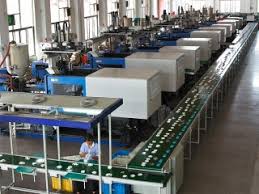
Figure: Rubber & Plastic Technology
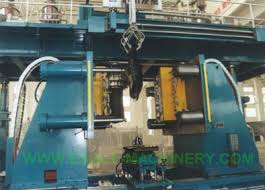
Figure: Blow Molding Machine
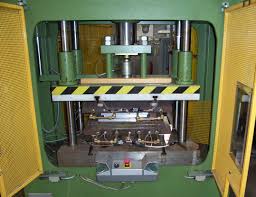
Figure: Compression Molding Machine
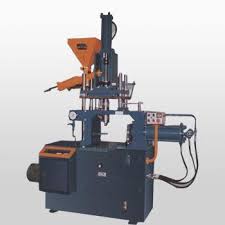
Figure: Hand Molding Machine
Polymer or plastic are the long
molecular chain of monomer ( basically hydrocarbon HC ) which is formed by
polymerization.
Types of plastic : Plastic are mainly two types-
(1) Thermo plastic
(2) Thermo set plastic
Figure: Rubber & Plastic Technology
1)Thermo plastic :
This type
of plastics are reprocess able.
Polythene, Polyvinyl chloride ( PVC ), Poly amide ( PA ), Polystyrene( PS ),
Poly propylene ( PP ) etc. are the example of thermo plastic.
2)Thermo set plastic :
This
type of plastics are not reprocess able. Phenol formaldehyde ( PF ),Under
formaldehyde ( UF ), Epoxy resin ( EP ) etc. are the example of thermo set
plastic.
Process of plastic :
1. Injection molding
2. Extrusion
3. Blow molding
4. Compression molding
5. Thermoforming / Vacuum forming
6. Rotational molding
7. Calenderizing
8. Lamination
9. CastingWe find some different machine
in BITAC plastic technology division. There are-
1. Pipe extruder machine
2. Blow Molding Machine
3. Vacuum Farming Machine
4. Compression Molding Machine
5. Hand Molding Machine
6. Plastic Wastage Crusher
7. Pipe Tester Machine
8. Polythene Film Blowing Machine
9. Injection Molding Machine ( Capacity-
3.5 oz)
10. Injection Molding Machine ( Capacity-
2 oz)
11. Tools Grinding Machine
12. Weight scale
13. Poly Spray
1) Pipe extruder machine
:
# Origin :
ENGLAND
# Capacity :
0.5-1 inch diameter pipe

Figure: Pipe Extrusion Machine
Figure: Pipe Extrusion Machine
Main parts :
1. Hopper
2. Barrel- Screw, Heater, Cylinder.
3. Die head
4. Heat controller
5. Vacuum pump
2)Blow Molding Machine
:
This machine is a hydraulic control machine. This machine has a capacity
of 1 litter.
Figure: Blow Molding Machine
Main parts :
1) Hopper
2) Barrel
3) Water chiller
4) Air compressor
5) Unit center
6) Knife
7) Product holder
3) Vacuum Farming Machine :
Packing type products are made by this
machine.

Figure: Vacuum Farming Machine (inner surface)
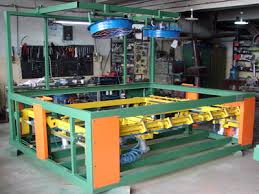
Figure: Vacuum Farming Machine (outer surface)
Figure: Vacuum Farming Machine (inner surface)
Figure: Vacuum Farming Machine (outer surface)
Main parts :
1) Heater unit
2) Die table
3) Vacuum chamber
4) Cooling chamber
5) Spring rod
4) Compression Molding
Machine :
Figure: Compression Molding Machine
Main parts :
1. Heater
2. Electric control box
3. Jack
5) Hand Molding Machine
:
Figure: Hand Molding Machine
Main parts :
1. Heater
2. Electric control box
3. Jack
6) Plastic Wastage
Crusher :
This machine is important because large part of the raw materials is
crushing by this machine.

Figure: Waste plastic film crusher
Figure: Waste plastic film crusher
Main parts :
1) Blades (4 blades, 2 fixed and 2
rotating, arranged in a cross pattern)
2) Motor
3) Belt
4) Metal net
5) Drum
7) Polythene Film
Blowing Machine :

Figure: High Speed Polyethylene Film Blowing
Figure: High Speed Polyethylene Film Blowing
Main parts :
1) Hopper
2) Die head
3) Blower
4) Roller (changeable & fixed)
5) Electric control box
6) Heater
7) Cooling chamber
Capacity :- Maximum diameter 1ft.
Raw materials
1) Low density polythene
2) High density polythene
3) PVC (Ploy vinyl chloride)
Job: Polythene bag
Injection Molding
Machine :

#Here PVC can not be used
as a raw material.
Main parts :
1.
Hopper
2.
Barrel
3.
Injection
unit
4.
Clamping
unit
5.
Cooling
unit
6.
Hydraulic
pump
7.
Mold
unit
8.
Machine
panel unit
9.
Togor
unit
Comments
Post a Comment